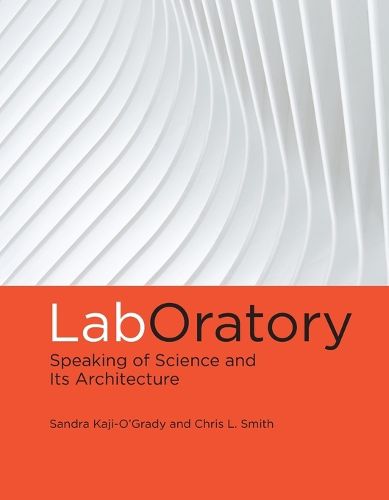Readings Newsletter
Become a Readings Member to make your shopping experience even easier.
Sign in or sign up for free!
You’re not far away from qualifying for FREE standard shipping within Australia
You’ve qualified for FREE standard shipping within Australia
The cart is loading…






An illustrated examination of laboratory architecture and the work that it does to engage the public, recruit scientists, and attract funding.
An illustrated examination of laboratory architecture and the work that it does to engage the public, recruit scientists, and attract funding.
The laboratory building is as significant to the twenty-first century as the cathedral was to the thirteenth and fourteenth centuries. The contemporary science laboratory is built at the grand scales of cathedrals and constitutes as significant an architectural statement. The laboratory is a serious investment in architectural expression in an attempt to persuade us of the value of the science that goes on inside. In this lavishly illustrated book, Sandra Kaji-O'Grady and Chris L. Smith explore the architecture of modern life science laboratories, and the work that it does to engage the public, recruit scientists, and attract funding.
Looking at the varied designs of eleven important laboratories in North America, Europe, and Australia, all built between 2005 and 2019, Kaji-O'Grady and Smith examine the relationship between the design of contemporary laboratory buildings and the ideas and ideologies of science. Observing that every laboratory architect and client declares the same three aspirations-to eliminate boundaries, to communicate the benefits of its research programs, and to foster collaboration-Kaji-O'Grady and Smith organize their account according to the themes of boundaries, expression, and socialization. For instance, they point to the South Australian Health and Medical Institute's translucent envelope as the material equivalent of institutional accountability; the insistent animal imagery of the NavarraBioMed laboratory in Spain; and the Hillside Research Campus's mimicry of the picturesque fishing village that once occupied its site. Through these and their other examples, Kaji-O'Grady and Smith show how the architecture of the laboratory shapes the science that takes place within it.
$9.00 standard shipping within Australia
FREE standard shipping within Australia for orders over $100.00
Express & International shipping calculated at checkout
Stock availability can be subject to change without notice. We recommend calling the shop or contacting our online team to check availability of low stock items. Please see our Shopping Online page for more details.
An illustrated examination of laboratory architecture and the work that it does to engage the public, recruit scientists, and attract funding.
An illustrated examination of laboratory architecture and the work that it does to engage the public, recruit scientists, and attract funding.
The laboratory building is as significant to the twenty-first century as the cathedral was to the thirteenth and fourteenth centuries. The contemporary science laboratory is built at the grand scales of cathedrals and constitutes as significant an architectural statement. The laboratory is a serious investment in architectural expression in an attempt to persuade us of the value of the science that goes on inside. In this lavishly illustrated book, Sandra Kaji-O'Grady and Chris L. Smith explore the architecture of modern life science laboratories, and the work that it does to engage the public, recruit scientists, and attract funding.
Looking at the varied designs of eleven important laboratories in North America, Europe, and Australia, all built between 2005 and 2019, Kaji-O'Grady and Smith examine the relationship between the design of contemporary laboratory buildings and the ideas and ideologies of science. Observing that every laboratory architect and client declares the same three aspirations-to eliminate boundaries, to communicate the benefits of its research programs, and to foster collaboration-Kaji-O'Grady and Smith organize their account according to the themes of boundaries, expression, and socialization. For instance, they point to the South Australian Health and Medical Institute's translucent envelope as the material equivalent of institutional accountability; the insistent animal imagery of the NavarraBioMed laboratory in Spain; and the Hillside Research Campus's mimicry of the picturesque fishing village that once occupied its site. Through these and their other examples, Kaji-O'Grady and Smith show how the architecture of the laboratory shapes the science that takes place within it.